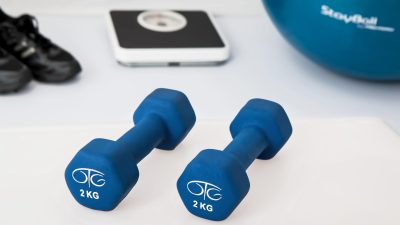It pays to have a well-planned goal if you want to turn those thoughts you’ve been having for a while into a reality. One great example of this is starting weight loss goals. It may not look much at a first glance. However, people often fail to meet their expectations whenever they attempt to lose weight.
We are here to help you how to successfully plan your weight-loss goals. To start it all off, you have to set yourself something realistic. It is not wrong to give yourself a little bit of challenge to spice things up. Nevertheless, make sure that you are setting up something you feel you can do. Here are a few pointers to follow to successfully set-up some achievable weight-loss goals.
Try Focusing on the Short-Term Goals
Outcome is the main focus of your goals in losing weight. When starting weight loss goals, it helps a lot to take it easy and step-by-step instead of rushing straight to the grand scheme of things, particularly the end result, which is the thing that you want to achieve the most.
The ideal way of looking at it, is to focus on short-term goals to avoid getting overwhelmed by the scale of your whole plan. For instance, focusing on day by day goals helps a lot in this like eating five vegetables and fruit, 30min walk, and drinking 1.8 liters of water every day. Short-term goals, in general, is extremely handy because it eases your transition toward your goal by turning all the necessary things you have to do (that may come as difficult tasks at first) into a habit.
Be S.M.A.R.T
A good deal of careful planning could go a long way in weight-loss. One useful thing you could use when trying to come up with a good plan is the abbreviation called SMART (Specific, Measurable, Attainable, Realistic, Trackable). In order to come up with the perfect goal, consider consulting the following criterias of SMART.
Specific – When setting up a goal, it is much better if you include the specific details. For instance, setting up a goal to exercise is not enough, but walking for 30 minutes after your shift each day is specific. You declare what you are about to do, its duration, and when you are about to do it.
Measurable – this is extremely handy because if you are able to measure your goal, then you can also probably determine whether or not you can succeed in it. Eating better cannot work as a goal, but eating at a maximum of 800 calories every day is measurable, thus achievable. Drinking water every day is too general and vague, but drinking 1.8 liters of water every day is completely measurable.
Attainable – when you set up your goal, one of the most important things to consider is whether you have enough resources and time to dedicate on it. For instance, if you do not have time to go to the gym on weekdays, then it will not be ideal to set up your goal to go there every day. Try to balance it out and study the flow of things in your life to be able to adapt to certain things.
Realistic – if truth be told, an average people could only be able to lose 5-10% of their weight. You should be more realistic in your goals. For instance, your doctor told you the ideal daily calorie intake you can cut off from the regular basis in order to lose some weight. Challenging yourself unrealistically by doubling that amount can only result in bad things. It is nice to give yourself a little bit of challenge every once in a while. However, do not cross the line between a little difficulty and a complete brick wall because you might end up not reaching your desired goal and end up frustrated.
Trackable – some people don’t care much about recording their progress. Tracking your progress, as small thing as it may seem, can easily help you a lot because sometimes, the impact of things can be realized much better when put into words and seen by the naked eyes in a form of whole number. If you are planning to lose 7kg, you should consider recording your progress every week. Tracking your progress helps a lot in evaluating your whole progress and knowing what and what does not work.
Take it Easy
Let’s be honest: not everything will always go according to plan. Every once in a while, while you thought that everything is going well, something will always manage to screw up in a most twisted and oblivious ways. These things might include emergency meeting, surprise office party, flat tires and etc. the best way to deal with them is to plan ahead of emergency plans in order to minimize the damage.
Adjustments are Almost Unavoidable
Like the point above, reassessments and a few adjustments are to be expected when doing a long term goal. For instance, you managed to reach your gall earlier than expected. In this case, you could always readjust your goal and make it a little bit bigger. Being able to adapt in many types of situation could certainly help you. Better fitting goals are usually encountered during adjustment phase because you already have a better understanding of your capabilities, making you test further how far you can go.
Those are a few things you can follow when setting up your own goal in weight-loss. Always keep in mind though that it is not a competition on who can lose weight quicker. Don’t be frustrated if something don’t work for you, you can always try another one. The point here is to try many things and find out what works best for you. After all, the great thing about it is that once you reach your limitations, you can finally aim to go beyond them. We are evolving almost every day, and two out of three times, it is always for the better. Set up your goals and reach them, and set the bar higher. Always aim to be better and you’ll be surprise how far you can go even just for a year. Those are the best tips you can get about starting weight loss goals. Ambitious, but possible. Aim higher!




